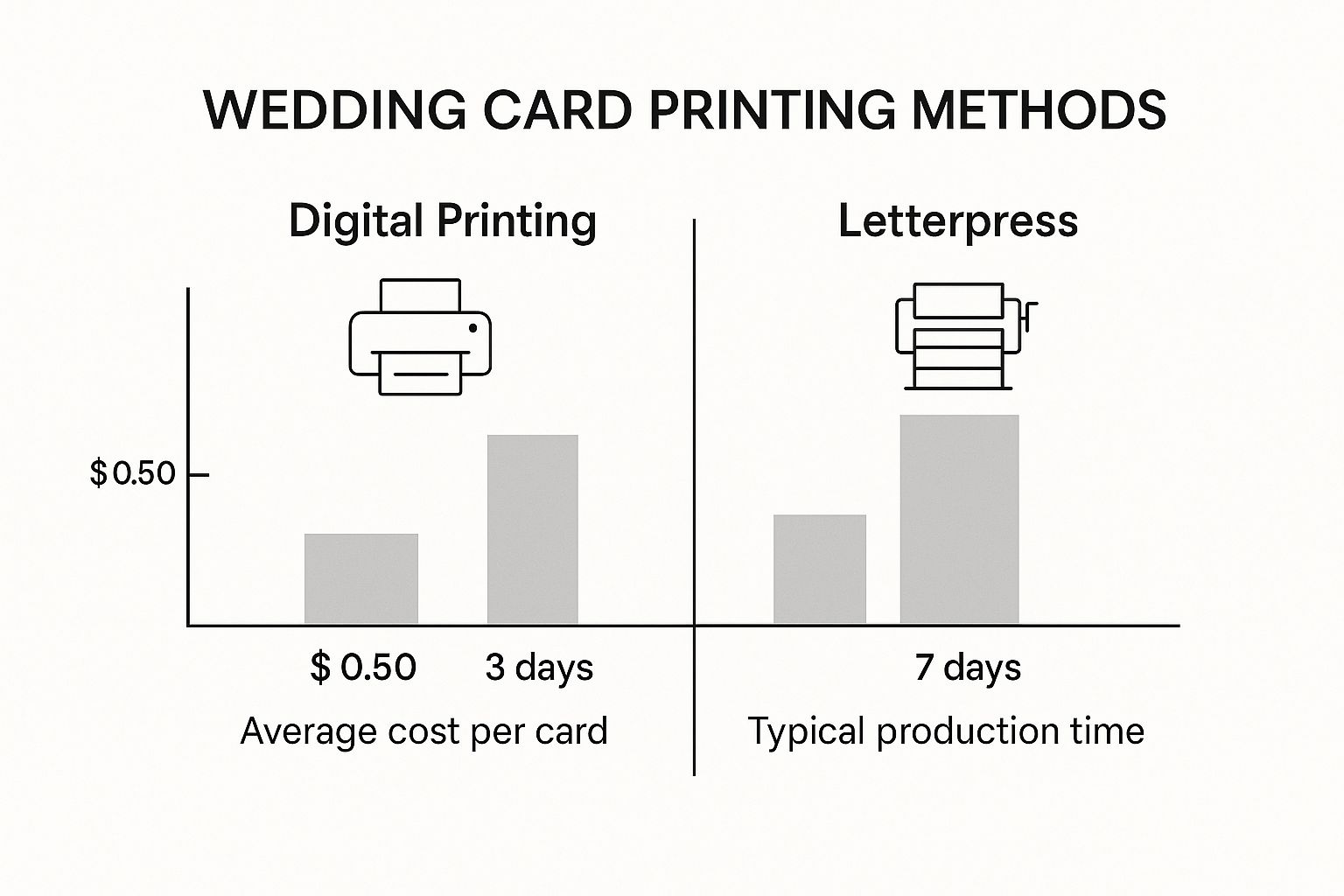
Oct 07, 2025, 5:42 pm
Bringing Your Wedding Invitation Design to Life with Printing Techniques
Bringing Your Design to Life with Printing Techniques
If the paper sets the stage, then the printing technique is the art that brings your design to life. The way ink interacts with your chosen paper can completely transform your invitation—from simple to spectacular. Whether you want something deeply tactile or sleek and modern, the printing method you select makes all the difference in how your printed wedding cards are perceived.
A timeless favorite, letterpress printing presses an inked plate into thick, cotton-based paper, leaving behind a rich, debossed impression you can actually feel. It’s the epitome of craftsmanship—classic, elegant, and made for couples who value tradition and texture.
In contrast, digital printing offers a clean, modern finish. It applies ink directly onto the paper surface, which allows for vibrant colors, gradients, and even full photographic designs. It’s fast, affordable, and ideal for creative layouts that feature detailed artwork or watercolor effects.
The right printing technique doesn’t just display your design—it adds depth, character, and emotion. It’s what turns an invitation from something seen into something felt.

As the infographic illustrates, digital printing is your best choice when speed and affordability matter most. Meanwhile, letterpress printing demands more time and budget, but the result is an heirloom-worthy piece—a handcrafted keepsake your guests will treasure for years.
Pro Tip:
For couples who want the best of both worlds, consider combining printing styles—like using letterpress for the main invitation and digital printing for enclosures or RSVP cards. It creates a layered look that balances elegance with practicality.
Popular Blogs

Oct 07, 2025, 5:20 pm
The Heart of the Matter: The Main Invitation
Discover the essential role of the main wedding invitation card, your guests’ first glimpse into you...
Read this article
Oct 15, 2025, 11:11 pm
Why Your Invitation Suite Matters
Your wedding invitation suite is more than paper, it’s the first glimpse your guests get into your l...
Read this article
Oct 03, 2025, 10:41 pm
Final Considerations for Your Invitation Strategy
Before choosing your wedding invitations, weigh factors like timeline, customization needs, and gues...
Read this article
Oct 16, 2025, 12:10 am
Practical Tips for a Seamless Wedding Invitation P...
Discover essential tips for managing your wedding invitation process with ease. From timelines to wo...
Read this article
Oct 07, 2025, 5:16 pm
Exploring the Complete Invitation Suite
Discover the essential components of a printed wedding invitation suite from the main invite to inse...
Read this article
Oct 16, 2025, 12:21 am
Common Questions About Invitation Etiquette
Confused about how to word or address your wedding invitations? This guide answers the most common e...
Read this article
Feb 29, 2024, 12:35 pm
A Few Tips To Make An Online Wedding RSVP Mind-blo...
Are you anxious regarding your guests’ responses to your wedding? In this blog, we will enlighten yo...
Read this article
Oct 31, 2025, 10:24 pm
ClickInvitation.com vs Other Digital Invitation Pl...
Discover how ClickInvitation.com outperforms other digital invitation platforms with a complete even...
Read this article
Oct 22, 2025, 9:04 pm
Who Should Really Be in Charge on the Night of You...
Behind every smooth wedding or corporate celebration is one key factor: strong leadership. Discover...
Read this article
Mar 29, 2024, 11:03 pm
The Benefits Of Digital Wedding Invites Over Tradi...
Are you still entangled with the traditional method of printing and distributing cards? If yes, it’s...
Read this article

